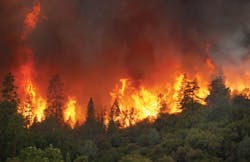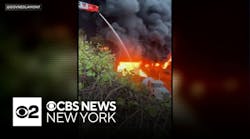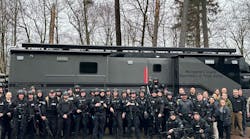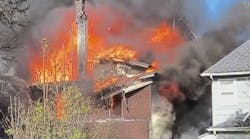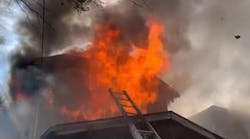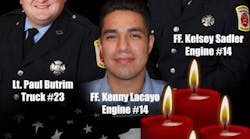College Campus Fire Safety
Each year college and university students, on- and off-campus, experience hundreds of fire-related emergencies nationwide. There are several specific causes for fires on college campuses, including cooking, intentionally set fires, overloaded power strips and open flame. Overall, most college-related fires are due to a general lack of knowledge about fire safety and prevention.
For most students, the last fire safety training they received was in grade school, but with new independence comes new responsibilities. It is important that both off-campus and on-campus students understand fire risks and know the preventative measures that could save their lives.
Safety Tips for Students:
Candles
- Make sure candles are in sturdy holders and put out after each use.
- Never leave a burning candle unattended.
- Keep candles away from draperies and linens.
- Use flameless candles, which are both safe and attractive.
Cooking
- Cook only where it is permitted.
- Keep your cooking area clean and uncluttered.
- Never leave cooking unattended.
- If a fire starts in a microwave, keep the door closed and unplug the unit.
Smoking
- Make sure cigarettes and ashes are out. Never toss hot cigarette butts or ashes in the trash can.
- Use deep, wide ashtrays. Place ashtrays on something sturdy and hard to ignite.
- After a party, check for cigarette butts, especially under cushions. Chairs and sofas catch on fire fast and burn fast.
- It is risky to smoke when you have been drinking or are drowsy.
Escape Planning
- Get low and go under the smoke to escape to your safe exit.
- Feel the door. If it's hot, use your second way out.
- Use the stairs; never use an elevator during a fire.
- Practice your escape plan. Always have two ways out.
LeDuc, Jones Receive Honors
Todd J. LeDuc, CFO, was honored by receiving the Ambassador of the Year Award during the Center for Public Safety Excellence’s 14th annual awards ceremony held during Fire-Rescue International in Chicago, Illinois.
The CPSE Ambassador of the Year Award recognizes an individual whose dedication and advocacy for the Center for Public Safety Excellence (CPSE) and its programs contribute directly to the success of the organization and the advancement of its mission throughout the international fire and emergency services industry. As a result of Chief LeDuc’s efforts as a CPSE Ambassador, the leaders and agencies serving our communities are better prepared, and their communities are safer places.
LeDuc, a Division Chief and 24-year veteran of Broward County (FL) Sheriff Fire Rescue, Rescue was also honored with the Garry Briese IAFC Safety Performance Award, which is presented annually to an IAFC Safety, Health and Survival (SHS) section member who has demonstrated a personal commitment to and achievement in the area of health and safety. As division chief of safety and wellness for the department, Chief LeDuc is responsible for the research, development and implementation of numerous health and safety initiatives and programs department-wide. Some of the highlights include successful grant applications to replace firefighter PPE and SCBA, a SAFER grant to restore 27 firefighter positions for safe staffing, and a UASI grant to add 30-plus NFA-certified safety officers to the department.
Chief Cliff Jones, CFO, was honored by receiving the Ray Picard Award. This award is aptly named after its first recipient and one of the founding fathers of fire and emergency service accreditation, Chief Ray Picard, who retired as fire chief of Huntington Beach, CA. Recipients are selected annually from a pool of nominations. The Award recognizes individual superior leadership and outstanding contribution to CFAI and to fire and emergency service accreditation.
Chief Jones is a 39-year veteran of the fire service, serving 22 of those years as fire chief in Tucson, AZ. He holds a Master’s degree in Public Administration and Bachelors in Political Science and is a tireless supporter of the accreditation process. His department was the alpha-test site for the National Fire Service Accreditation Project and became the first of five beta test departments to become accredited in 1997 through the Commission on Fire Accreditation International.
Chief Jones is recognized as a listener and supporter who encourage others to grow and develop. He epitomizes what the Ray Picard Award stands for, committed to providing the leadership to institutionalize continuous improvement in your organization.
Rim Fire Continues to Grow
Already one of the 10 biggest fires in state history, the Rim Fire, which started on August 17, was continuing to grow covering 180,000 acres by late August. More than 4,000 personnel had been assigned to the fire, which was threatening about 4,500 homes and had already crossed the Yosemite National Park Boundary. Due to inaccessible, steep terrain and active fire behavior a combination of direct and indirect attack was being used. The Southeast Blue Team assumed command of the Rim Fire on August 23 at 6:00 a.m. and will remain in unified command with CalFire.
Rapid fire growth and extreme fire behavior continued to hamper suppression efforts. A significant utilization and reliance upon aerial resources with heavy air tankers including the VLAT DC-10 and MAFFS was occurring with structure defense preparation of locations in advance of the fires spread, control of spot fires and slowing the fires advancement through terrain inaccessible to ground resources to allow time for indirect line construction to be completed. Type 1 helicopters were providing point protection and cooling areas where direct line construction could be achieved safely.
Line-of-Duty Deaths
Four U.S. firefighters recently died in the line of duty. Two career firefighters, one volunteer firefighter and one contractor died in four separate incidents. One death was the result of an accident, and three deaths were health related.
LIEUTENANT JAMES FELLOWS, 45, of the Clearfield Township Fire Department in Rapid City, MI, died on Aug. 20. The previous day, Fellows responded to a rescue call. Less than 24 hours later, he died at home from a sudden illness. Fellows was a seven-year member of the department.
FIREFIGHTER OSCAR MONTANO-GARCIA, 50, a contract firefighter for Pacific Coast Contracting, died on Aug. 25. Montano-Garcia was working on the three-acre Nabob Fire in the Rogue River-Siskiyou National Forest in Siskiyou County, CA, when he suffered a fatal heart attack.
CAPTAIN TOKEN ADAMS, 41, a U.S. Forest Service firefighter from the Jamez Ranger District, NM, died on Aug. 30. Adams was on an ATV checking on a report of smoke in the Santa Fe National Forest in northern New Mexico when the vehicle ATV crashed. Adams was the subject of a week-long search before his body was discovered on Sept. 6. Adams was a 10-year veteran of the Forest Service.
ASSISTANT CHIEF JOE DARR, 62, of the Chillicothe, MO, Fire Department died on Sept. 4. On Aug. 17, Darr was found unresponsive at the fire station. He was initially transported to Hedrick Medical Center and then transferred to St. Luke’s Hospital in Kansas City, MO. He was released from the hospital and found unresponsive at his home on Sept. 4. He was transported to St. Luke’s Hospital, where he died. Darr was a 34-year veteran of the fire service.
—Jay K. Bradish
